The ancient practice of analyzing the iris to gain insights into one’s health has fascinated practitioners for centuries. قراءة علم القزحية is a non-invasive assessment method that examines the patterns, colors, and characteristics of the iris to identify potential health conditions and constitutional strengths. This comprehensive guide explores the science, methodology, and applications of iris analysis in modern holistic health practices.
The Historical Development of قراءة علم القزحية
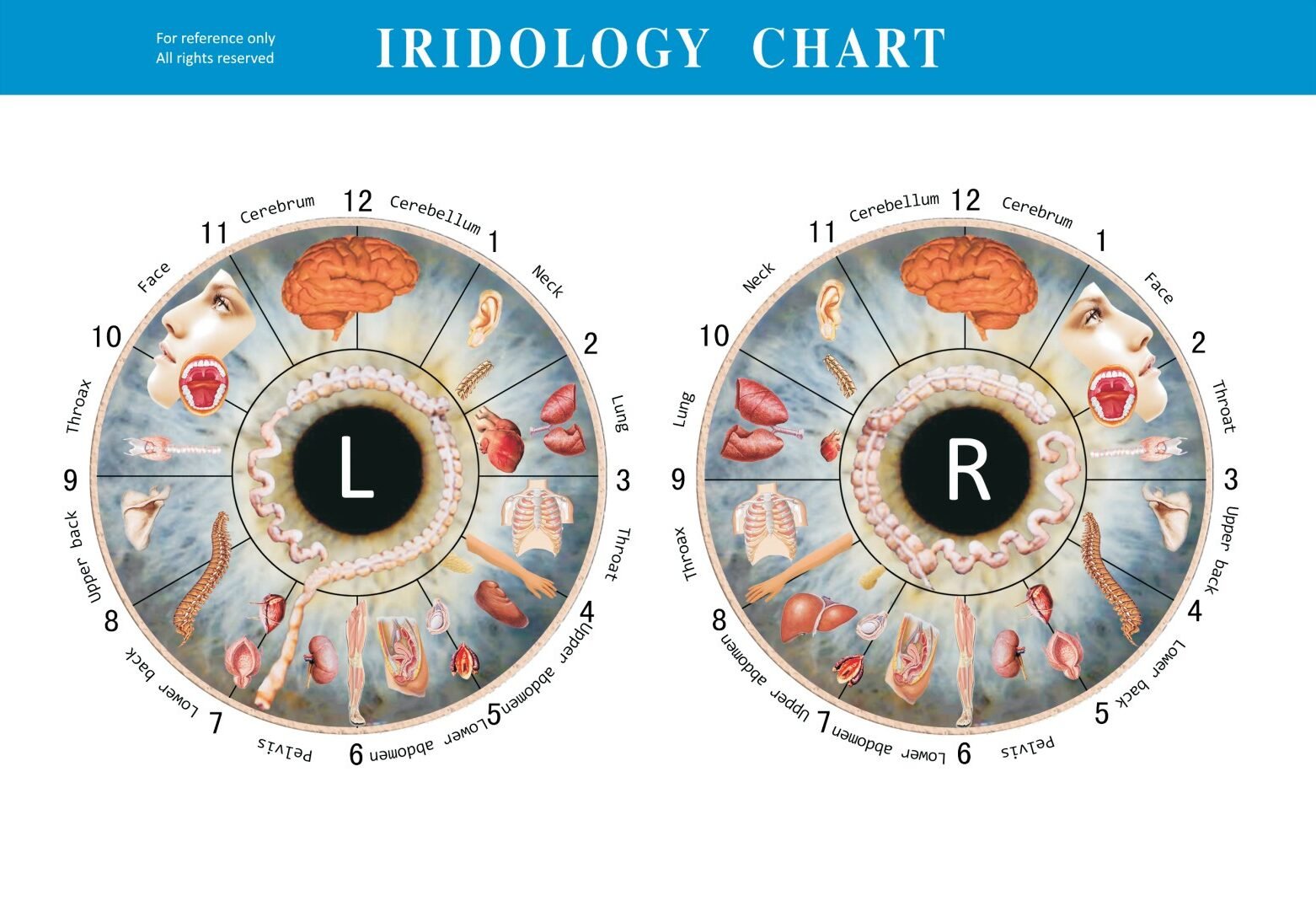

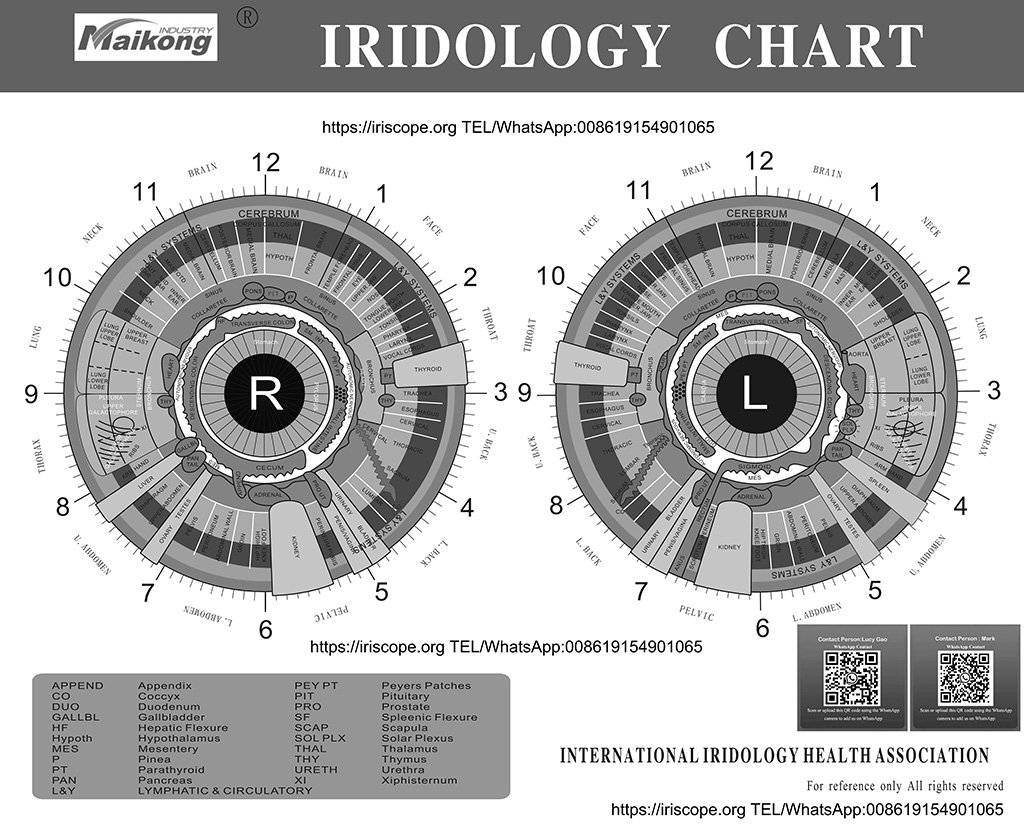
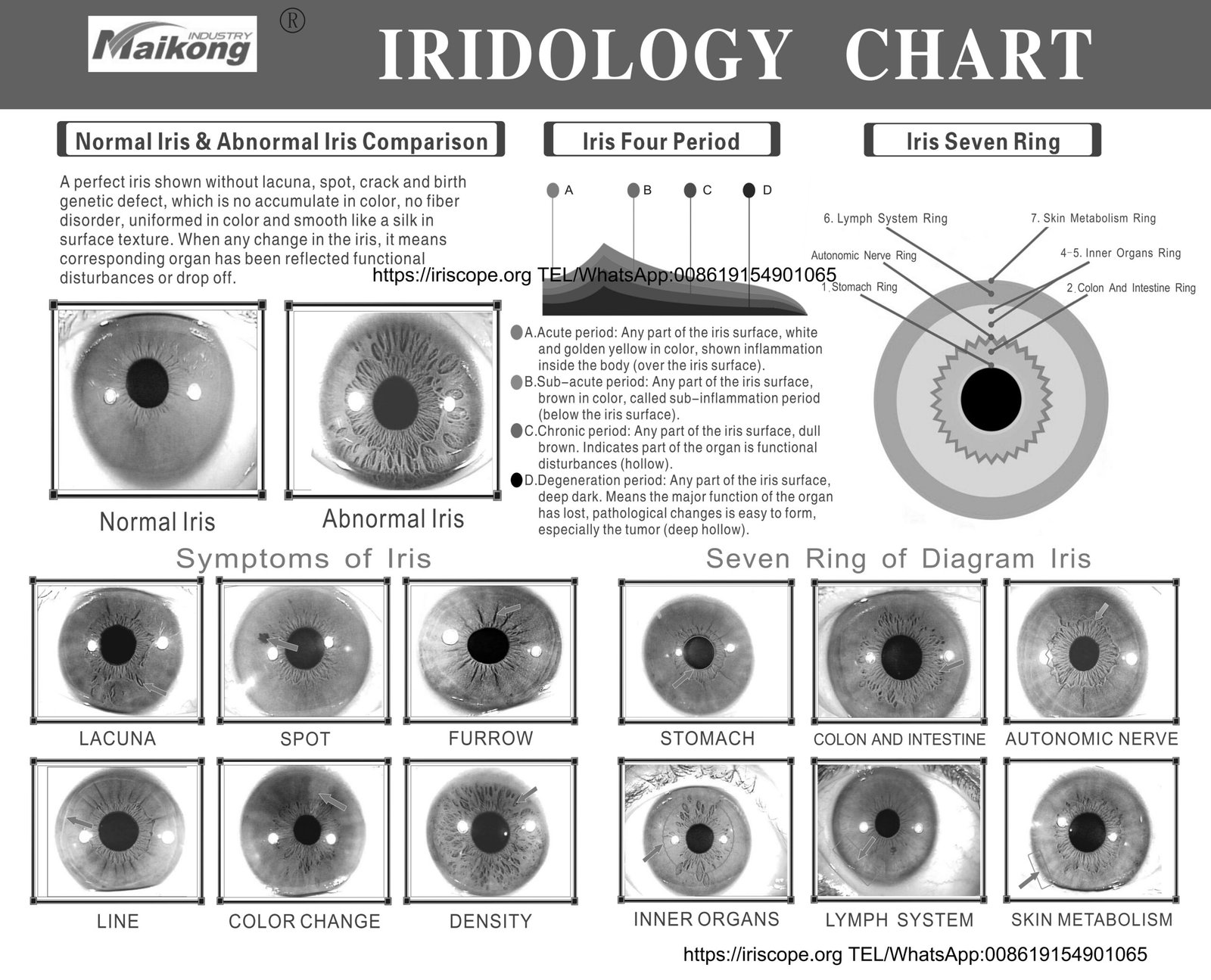
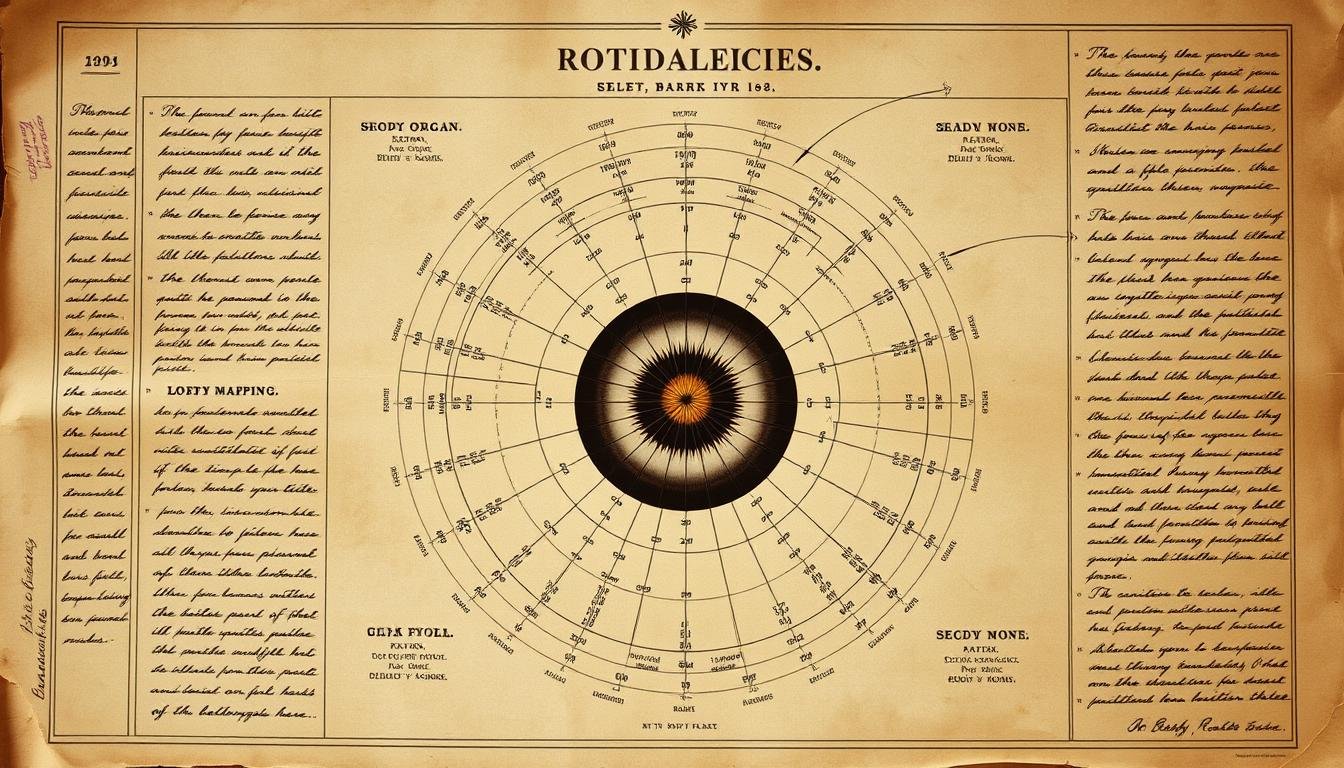
Early iridology chart developed in the 19th century showing iris-to-organ correlations
The roots of iridology can be traced back thousands of years to ancient civilizations in Egypt, China, and India, where physicians observed connections between eye markings and health conditions. However, modern علم القزحية as we know it today began taking shape in the 19th century.
The pivotal moment in iridology’s development came when Hungarian physician Dr. Ignatz von Peczely made a remarkable observation as a child. After accidentally breaking an owl’s leg, he noticed a distinct dark mark appear in the bird’s iris. This observation sparked his curiosity, leading him to study the relationship between iris markings and physical conditions. In 1881, von Peczely published his groundbreaking work, “الاكتشافات في مجال العلوم الطبيعية والطب: التعليم في دراسة التشخيص من العين ،” والذي تضمن أول مخطط شامل للقزحية يرسم مناطق الجسم لمناطق محددة من القزحية.
In the early 20th century, Dr. Bernard Jensen further developed and popularized iridology in the United States, creating detailed iris charts that are still widely used today. His systematic approach to iridology reading established many of the foundational principles practitioners follow in modern practice.
The Scientific Basis of Iris Analysis
The scientific foundation of علم القزحية rests on the understanding that the iris contains thousands of nerve endings connected to the brain via the optic nerve and hypothalamus. This neural network creates a biological connection between the iris and various body systems through the nervous system.
The iris consists of complex, interconnected structures including:
- Thousands of nerve fibers
- Blood vessels
- Muscle tissue
- Connective tissue
- Pigmentation cells
According to iridology theory, these structures reflect changes in corresponding body tissues through the nervous system. When tissues in the body experience inflammation, toxicity, or congestion, these conditions may manifest as visible changes in specific areas of the iris.
Recent research using advanced imaging technology has begun exploring these connections more systematically. A 2013 study published in the IEEE Journal of Biomedical and Health Informatics demonstrated correlations between iris and pupil changes and certain digestive disorders, suggesting potential scientific merit to some iridology principles.
“The iris contains a wealth of information about our constitutional strengths and weaknesses. Each iris is as unique as a fingerprint, revealing inherited traits and potential health tendencies.”
– Dr. Bernard Jensen, Pioneer of Modern Iridology
A professional iridology reading follows a systematic approach to ensure accurate and comprehensive analysis. Here’s how the process typically unfolds:
1. Equipment Preparation
The iridologist prepares specialized equipment for the examination, which may include:
- إيريسكوب – a specialized magnification device with illumination
- Digital camera with macro lens capability
- Iridology software for digital analysis
- Reference charts and documentation materials
2. Client History and Consultation
Before examining the iris, a thorough consultation gathers relevant information:
- Medical history and current health concerns
- Family health history
- Lifestyle factors (diet, exercise, stress levels)
- Current medications and supplements
3. Iris Examination
The actual examination involves careful observation of both irises:
- The client sits comfortably with proper lighting
- Each iris is examined separately, typically right eye first
- Digital photographs may be taken for detailed analysis
- The practitioner observes color, structure, and markings
4. Chart Mapping and Analysis
The iridologist maps observations to an iridology chart:
- Correlating iris zones to corresponding body systems
- Identifying markings, colors, and patterns
- Noting areas of potential concern or strength
- Comparing findings between left and right irises
5. Interpretation and Recommendations
The final stage involves explaining findings and suggesting appropriate actions:
- Explaining observations in understandable terms
- Discussing potential health implications
- Suggesting lifestyle modifications if appropriate
- Recommending follow-up assessments if needed
Our team provides comprehensive iridology assessments using state-of-the-art equipment. Contact us to learn more about our services or to schedule your reading.
Schedule Your Reading
Iridology Chart Interpretation Methods


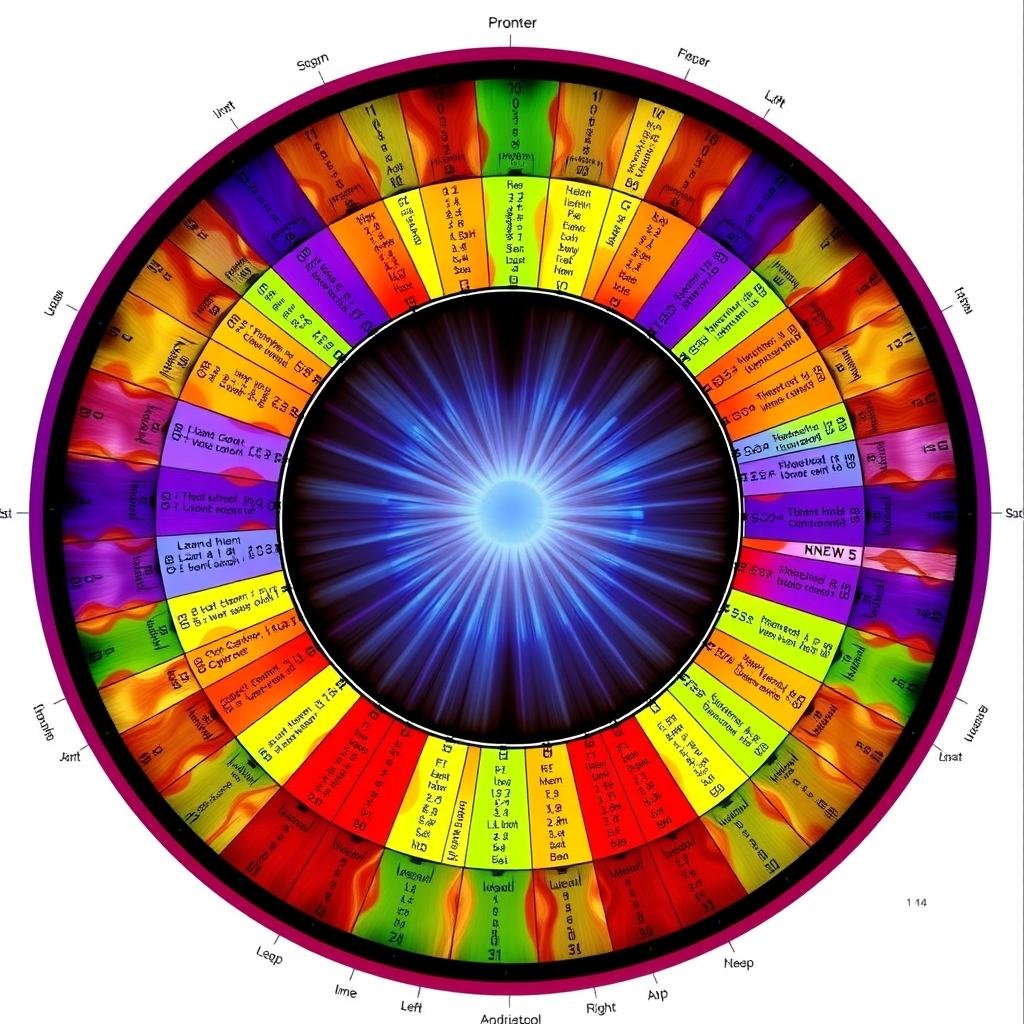
Modern iridology chart showing the correlation between iris zones and body systems
Interpreting an iridology chart requires understanding the complex mapping system that connects specific iris zones to corresponding body systems. Standard iridology charts divide each iris into approximately 60 sections, creating a detailed map of the body.
The Topography of the Iris
The iris is typically divided into several key zones:
| منطقة القزحية |
Body Correlation |
Interpretation Focus |
| Pupillary Zone (Inner) |
الجهاز الهضمي، المعدة |
Digestive health, nutrient absorption |
| Ciliary Zone (Middle) |
Major organs, glands |
Organ function, metabolic activity |
| Peripheral Zone (Outer) |
Skin, circulation, lymphatics |
Elimination, circulation efficiency |
| Collarette (Autonomic Nerve Wreath) |
Nervous system |
Stress response, autonomic balance |
Professional iridologists look for specific markers that indicate various conditions:
Color Indicators
- أبيض: التهاب أو نشاط حاد
- أصفر: Kidney or urinary challenges
- البرتقالي: مشاكل في الكبد أو المرارة
- بني: Liver congestion or toxicity
- أسود: Tissue damage or degeneration
Structural Indicators
- الأشعة الشمسية: Toxic radiations indicating irritation
- الثغرات: Enclosed lesions showing inherent weakness
- الخبايا: Open lesions indicating acute conditions
- Pigments: Colored spots showing chemical deposits
- Rings: Circular patterns indicating stress or tension
The interpretation process requires considering both the location and the type of marking. For example, a white acute lesion in the lung area might indicate active inflammation in the respiratory system, while a dark lacuna in the same area might suggest an inherent weakness or chronic condition affecting the lungs.
ملاحظة مهمة: Iridology is considered a complementary assessment tool and not a diagnostic method for specific diseases. Findings should be correlated with other health information and medical assessments.
Modern Applications of قراءة علم القزحية in Healthcare
While conventional medicine has been slow to embrace iridology, the practice continues to evolve and find applications in various healthcare settings, particularly within complementary and alternative medicine frameworks.
Preventive Health Assessment
One of the most valuable applications of علم القزحية is in preventive health. By identifying constitutional weaknesses and potential problem areas before symptoms develop, practitioners can recommend targeted lifestyle modifications and preventive measures.
Complementary Assessment Tool
Many holistic health practitioners use iridology as one component of a comprehensive health assessment, alongside other modalities such as:
- Nutritional assessment
- Physical examination
- Health history analysis
- Functional testing
Personalized Wellness Planning
Information gathered from an iridology reading can help practitioners develop highly personalized wellness protocols that address an individual’s specific constitutional tendencies and potential vulnerabilities.
Monitoring Health Progress
Some practitioners use sequential iridology assessments to monitor changes in health status over time, particularly when implementing nutritional or lifestyle interventions.
Traditional Approach
- Manual examination with magnifying tools
- Paper chart reference
- التفسير الذاتي
- Limited documentation capability
Modern Approach
- Digital imaging with high-resolution cameras
- Computer-assisted analysis
- Standardized interpretation protocols
- Comprehensive digital documentation
Upgrade Your Practice with Professional Iridology Equipment
We offer state-of-the-art iriscopes, digital cameras, and analysis software for health practitioners. Our equipment is used by professionals worldwide.
Explore Our Equipment
التواصل عبر الواتس اب
Common Misconceptions About Iridology
Despite its long history and continued practice, iridology faces several misconceptions that can lead to misunderstandings about its purpose and limitations.
Facts About Iridology
- Iridology is an assessment tool, not a diagnostic method
- It identifies constitutional tendencies, not specific diseases
- Professional iridology requires proper training and equipment
- It works best as part of a comprehensive health assessment
- Modern approaches incorporate technological advances
Misconceptions About Iridology
- Iridology can diagnose specific diseases
- It can replace conventional medical diagnosis
- The iris changes rapidly with health conditions
- Anyone can practice iridology without training
- It has no scientific basis whatsoever
Understanding these distinctions is crucial for both practitioners and clients. Professional iridologists recognize the boundaries of their practice and work within an ethical framework that emphasizes complementary assessment rather than disease diagnosis.
“Iridology does not claim to diagnose disease but rather to identify constitutional strengths and weaknesses, allowing for targeted preventive approaches before symptoms develop.”
When approached with proper understanding and realistic expectations, iridology can provide valuable insights as part of a holistic health assessment. However, it should never replace appropriate medical care or delay seeking treatment for serious health concerns.
كثيرا ما يتم طرح الأسئلة حول قراءة علم القزحية
What can an iridology reading reveal about my health?
An iridology reading can reveal constitutional strengths and weaknesses, potential areas of inflammation or congestion, inherent tendencies toward certain conditions, and overall tissue integrity. It provides insights into your body’s predispositions rather than diagnosing specific diseases.
يكون iridology reading scientifically proven?
Iridology has limited scientific validation in conventional medical research. While some studies show promising correlations between iris markings and certain health conditions, more research is needed. The practice is based on observed correlations over many years of clinical practice rather than extensive controlled studies.
How long does an iridology reading take?
A comprehensive iridology reading typically takes between 30-60 minutes. This includes the initial consultation, the examination of both irises, analysis using iridology charts, and discussion of findings. Follow-up sessions are usually shorter, focusing on specific areas of interest or monitoring changes.
يستطيع iridology reading replace medical diagnosis?
No, iridology reading cannot and should not replace proper medical diagnosis. It is a complementary assessment tool that provides additional information about constitutional tendencies and potential areas of concern. Always consult with qualified healthcare providers for diagnosis and treatment of medical conditions.
What equipment is needed for professional iridology reading؟
Professional iridology requires specialized equipment including an iriscope (a magnification device with proper illumination), high-resolution digital cameras with macro capabilities, iridology analysis software, and reference charts. Quality equipment ensures accurate observation of the fine details in the iris structure.
هل لديك المزيد من الأسئلة حول علم القزحية؟
Our team of experts is ready to answer your questions about iridology readings, equipment, or training. Contact us today to learn more.
أرسل بريدًا إلكترونيًا إلى المتخصصين لدينا
Embracing the Insights of Iridology
Iridology offers a unique window into understanding constitutional health tendencies and potential areas of concern. While it continues to be viewed with skepticism by some in conventional medicine, many holistic health practitioners find value in its ability to provide insights into inherent strengths and weaknesses.
The practice of iridology reading has evolved significantly from its historical roots, incorporating modern technology and standardized approaches while maintaining its core principles. When practiced by trained professionals using quality equipment, it can serve as a valuable component of a comprehensive health assessment.
Whether you’re a health practitioner interested in adding iridology to your practice or an individual curious about what your eyes might reveal about your health, approaching iridology with an informed and balanced perspective will help you gain the most benefit from this fascinating assessment method.
Ready to Explore the World of Iridology?
We offer professional iridology equipment, training resources, and personalized readings. Contact us to learn how we can support your health journey or professional practice.
اتصل بنا اليوم

























